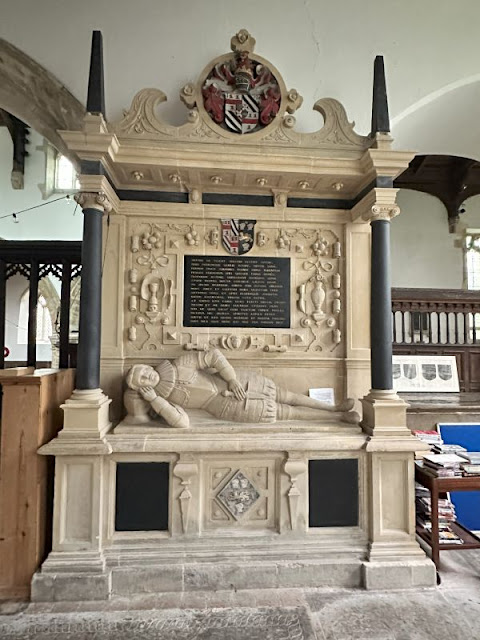My only thoughts on Upper Hayford was that their used to be a huge USAF airbase there, it's a place I had not been any where near even though I had heard of the place. Once it would have been full of airplane noise, now it is a quiet village again and St Mary's church was there.
The village had a church by AD 1074. Inside the current Church of England parish church of St Mary is a 14th-century recumbent effigy of a priest in a 14th-century arched recess in the chancel. The church may have been rebuilt in the latter part of the 15th century, but only the Perpendicular Gothic west tower survives from that time.
Major repairs to the roof and south aisle were made in 1668 and 1769, but by the 1860s the nave and chancel were in a poor condition again. In 1865 the church was demolished except for the west tower. A new church, designed by the architect Thomas Talbot Bury in a Gothic Revival interpretation of Perpendicular Gothic, was built in its place and completed in 1867.
This Victorian building has very regular coursed masonry, which departs conspicuously from the traditional Mediæval rubble masonry of the tower and, presumably, the demolished parts of the previous church. Bury preserved only a handful of features from the Mediæval church: a Perpendicular Gothic window in the north wall of the chancel, a piscina, a tomb recess and a 14th-century effigy of a priest. St Mary's is a Grade II* listed building.
The tower has three bells, the oldest of which is the tenor bell cast in 1624 by Richard I Purdue, who had foundries in places including Glastonbury and Stoford in Somerset. Mears & Stainbank of the Whitechapel Bell Foundry cast the second bell in 1866 and the treble bell in 1946. St Mary's has also a Sanctus bell of unknown date.
St Mary's parsonage was designed by William Wilkinson and built in 1869.
St Mary's parish is now part of the Cherwell Valley Benefice, along with the parishes of Ardley, Fritwell, Lower Heyford, Somerton and Souldern.
The east end of the church from the roadside
Entrance through the gate or over the stile
Wide view of the south side of the church
Going around to look at the north side
West view of the tower
The doorway in the tower base
The churchyard, these are the only two graves I could see and thought that was it till I was leaving the church and looked over the road and spotted the top of this war memorial
The village war memorial
Graves here are more recent then in the churchyard
Looking west
North west
South east where you can see commonwealth war graves
These memorials can be seen by the commonwealth war graves the left hand one to two airmen killed when their plane crashed Oxford Mail the right ones to the RAF personnel 1940 - 45
The commonwealth war graves of RAF personnel
The church porch and tower
Inside looking down the nave
The chancel arch with metal and wood screen
Inside the chancel
Altar and east window
The east window looking quiet superb
Looking back down the nave
A tomb recess and a 14th-century effigy plus other items to see in the chancel
Pulpit behind the floral display
Looking down from the pulpit
Carving on the pillars
The chapel on the south side
Altar and screen behind
The screen is quite beautiful to see
North aisle looking at the organ
The organ at the end of the north aisle
Some of the tomb slabs in the floor that are readable
Dedication to the USAF personel at RAF Upper Hayford
Commemoration plaques to Queen Victoria and Queen Elizabeth II
The font with poppy appeal
I will leave you with this view of the commonwealth war graves and memorial stone
Till next time may I wish you all a peaceful week










































































































